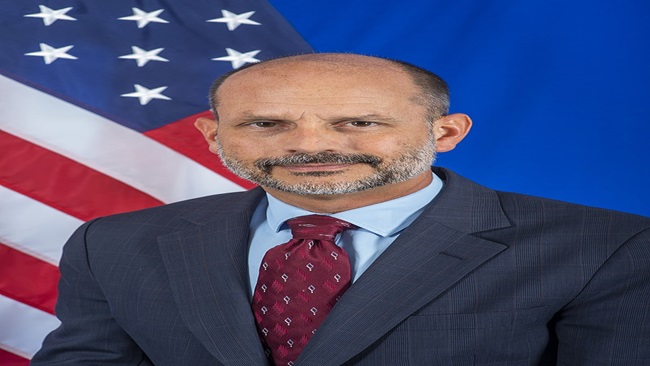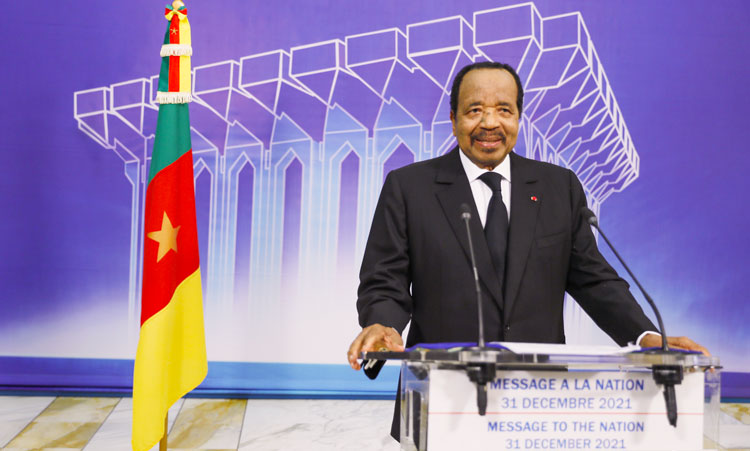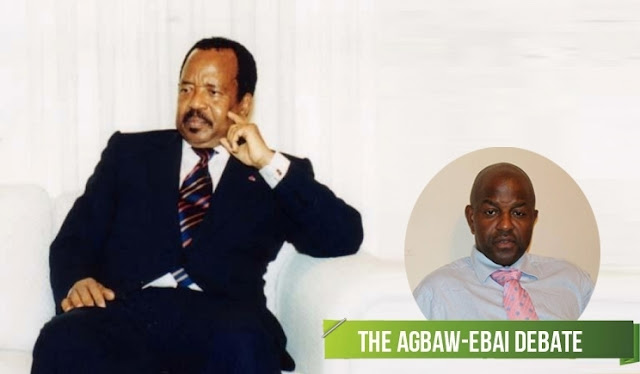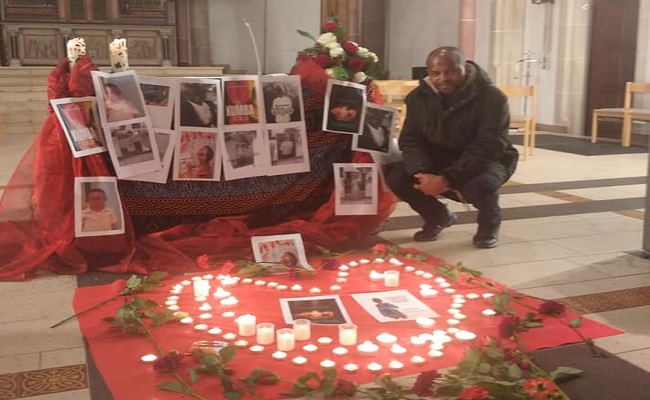Categories
Recent Posts
- Biya regime pledges to repay 616M CFA Francs to Baccalaureate examiners
- France: Marine Le Pen barred from running for public office for five years
- FECAFOOT: Unity prevails amid Eto’o-Brys tensions
- Yaoundé: EYUMEMA welcomes Honorable Rose Abunaw
- CPDM Covid Scandal: Prosecutor seeks 10-Year ban for 4 officials
Archives
- March 2025
- February 2025
- January 2025
- December 2024
- November 2024
- October 2024
- September 2024
- August 2024
- July 2024
- June 2024
- May 2024
- April 2024
- March 2024
- February 2024
- January 2024
- December 2023
- November 2023
- October 2023
- September 2023
- August 2023
- July 2023
- June 2023
- May 2023
- April 2023
- March 2023
- February 2023
- January 2023
- December 2022
- November 2022
- October 2022
- September 2022
- August 2022
- July 2022
- June 2022
- May 2022
- April 2022
- March 2022
- February 2022
- January 2022
- December 2021
- November 2021
- October 2021
- September 2021
- August 2021
- July 2021
- June 2021
- May 2021
- April 2021
- March 2021
- February 2021
- January 2021
- December 2020
- November 2020
- October 2020
- September 2020
- August 2020
- July 2020
- June 2020
- May 2020
- April 2020
- March 2020
- February 2020
- January 2020
- December 2019
- November 2019
- October 2019
- September 2019
- August 2019
- July 2019
- June 2019
- May 2019
- April 2019
- March 2019
- February 2019
- January 2019
- December 2018
- November 2018
- October 2018
- September 2018
- August 2018
- July 2018
- June 2018
- May 2018
- April 2018
- March 2018
- February 2018
- January 2018
- December 2017
- November 2017
- October 2017
- September 2017
- August 2017
- July 2017
- June 2017
- May 2017
- April 2017
- March 2017
- February 2017
- January 2017
- December 2016
- November 2016
- October 2016
- September 2016
- August 2016
- July 2016
- June 2016
Featured
Most Commented Posts
 4 Anglophone detainees killed in Yaounde
4 Anglophone detainees killed in Yaounde
18 comments Chantal Biya says she will return to Cameroon if General Ivo Yenwo, Martin Belinga Eboutou and Ferdinand Ngoh Ngoh are sacked
Chantal Biya says she will return to Cameroon if General Ivo Yenwo, Martin Belinga Eboutou and Ferdinand Ngoh Ngoh are sacked
13 comments The Anglophone Problem – When Facts don’t Lie
The Anglophone Problem – When Facts don’t Lie
12 comments Anglophone Nationalism: Barrister Eyambe says “hidden plans are at work”
Anglophone Nationalism: Barrister Eyambe says “hidden plans are at work”
12 comments Largest wave of arrest by BIR in Bamenda
Largest wave of arrest by BIR in Bamenda
10 comments
Latest Tweets
Featured
-

Biya regime pledges to repay 616M CFA Francs to Baccalaureate examiners
-

France: Marine Le Pen barred from running for public office for five years
-

FECAFOOT: Unity prevails amid Eto’o-Brys tensions
-

Yaoundé: EYUMEMA welcomes Honorable Rose Abunaw
-

CPDM Covid Scandal: Prosecutor seeks 10-Year ban for 4 officials
-

Cameroon still faces power cuts despite full output from Nachtigal Dam
-

Financial scandal rocks Mkpot Oil Mill Project!! Manyu Chiefs won’t talk
© Cameroon Concord News 2025





29, February 2020
EUROMONEY says Cameroon still a high-risk option 0
Cameroon finally held its repeatedly postponed legislative and municipal elections in February for the first time in seven years. It came amid the continuing swell of separatist fervour from the Anglophone community situated in the northwest and southwest regions bordering Nigeria. The elections took place without notable social upheaval, but have done little to usher in a calmer political environment. A partial boycott was spurred by the main opposition Movement for the Rebirth of Cameroon (MRC) – the party led by Maurice Kamto, who was living in exile until Thursday, when he returned to Cameroon. This invariably handed an easy victory to the Cameroon People’s Democratic Movement (RDPC) supporting the octogenarian president Paul Biya, despite the other large opposition party, the Social Democratic Front (SDF), participating.
Euromoney’s panel of experts is only too aware of the high risks associated with investing in Cameroon, which remains outside the top-100 sovereign borrowers, ranking a lowly 132nd out of 174 countries ranked in Euromoney’s survey. On a score of 34.7 out of a maximum 100 risk points (where a higher score implies safety), Cameroon is far riskier than neighbouring Gabon or Nigeria, and more in line with Gambia and Madagascar, while similar to Algeria and Ukraine in the crowd-sourcing survey:
One of Euromoney’s Cameroon contributors is Patrick-Nelson Essiane, an economist at the Bank of Central African States, and financial manager at the Initiative for Research and Analysis in Sustainable Development in Central Africa (IRADDAC). He brings to attention several political risks, including the constitutional council ordering the annulment of legislative elections in some parts of the southwest and northwest regions, where re-runs are expected in 20 to 40 days. He also notes that in mid-February an incident involving the army and secessionists resulted in the death of women and children in Ngarbuh (northwest region), highlighting the insecurity.
“The international community called for a deeper and independent investigation of this tragedy,” he says. “While between February 4 and 22, according to local media, 14 civilians and one of the military were killed by Boko Haram in the far north region, yet there were no special mentions of these incidents internationally.”
On top of that, three out of 10 regions have faced some instability recently, though with most of the violence occurring away from the biggest cities relatively close to the border with Nigeria.
Economic risk
However, on macro-fiscal metrics, Cameroon’s risks do appear to be slowly improving. That is the impression given by the IMF’s latest extended credit facility (ECF) programme review, showing accelerating GDP growth, the non-oil primary fiscal deficit narrowing and ample imports coverage. Cameroon can access the pool of regional forex reserves and also received a $76.1 million disbursement from the IMF in January, on completion of the fifth programme review, bringing the total up to $590 million.
If recent forecasts from the IMF, central bank and government are assessed as one, economic growth was around 3.3% in 2019, and could rise to around 4.5% in 2020, on the back of an increase in gas production, and decent prospects for manufacturing and telecommunications. “As economic activity in Cameroon is relatively well balanced geographically, the episodes of violence in the southwest, northwest and far north regions would have probably a moderated impact on the macroeconomic performance of Cameroon,” says Essiane. “In addition, the key industrial centre of Cameroon (Douala) is not fundamentally affected by the crisis, even if we see an increase of the workforce in this city due to migrations from the northwest and southwest regions.”
Yet Essiane admits there are some prominent risks to figure. “The northwest and southwest crisis has affected agriculture in these two regions since 2017, with a huge decrease of the Cameroon Development Corporation (CDC) production of banana, palm oil and rubber. “Informal food agricultural production also decreased, with farmers leaving their plantations, leading to an increase in food inflation in urban centres of the country.”
Oil
Moreover, last year, Sonara, the national oil refinery, suffered a fire, contributing to lower-than-projected tax revenue, constraining budget implementation. Treasury finances have become stretched by the government’s military expenses to address Boko Haram in the far north and the Anglophone crisis. Plus, Cameroon is acutely vulnerable to a global downturn caused by trade friction and/or the spread of the coronavirus disease (Covid-19), especially to any related falls in oil prices. The implications are non-trivial. For while Cameroon’s debt remains stable, there is “high risk of debt distress”, according to the IMF, with the debt servicing-to-exports ratio breaching the accepted threshold continuously until 2025, and significantly so until 2022. This is due, first, to the inclusion of Sonara’s maturing short-term liabilities and later because of a maturing Eurobond.
The IMF’s comprehensive debt sustainability analysis factors in various scenarios and indicates the debt load can be sustained and properly addressed. However, that assumes there are no shocks, including any undisclosed liabilities. There is nothing to suggest there might be, but the experience of Mozambique and Zambia should certainly temper the enthusiasm for investing in Cameroon.
Culled from Euromoney.com